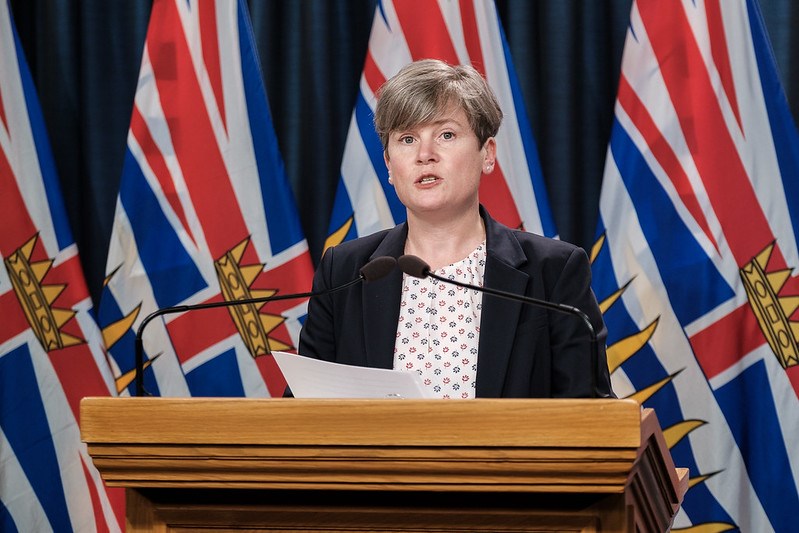The collision between the political and practical realities of the B.C. government’s clean energy dreams were never more evident than this week, courtesy of a document from the province’s energy minister that fell into the hands of her opponents at the legislature.
At the centre is a hydrogen plant proposed by an Australian billionaire near Prince George. The $2-billion project has the potential to kick-start a highly-coveted “green hydrogen” market, which would generate more than 250 direct jobs, help decarbonize major sectors of the economy and give the province a homegrown zero-carbon fuel for use locally.
The entire venture, by billionaire Andrew Forrest’s company Fortescue, would be great economic stimulus for “a city that desperately needs the kind of jobs that he’s proposing to bring forward,” said Premier David Eby.
“The mayor is in support, the local First Nations is in support, I am in support,” Eby said Thursday.
“Mr. Forrest needs 1000 megawatts of electricity for the project that he has proposed, and that is massive. The challenge for us is we want those jobs, we want this plant, and we’re entering into discussions and negotiations with Fortescue.”
The premier’s full-throated optimism to cut a deal with Fortescue was at odds, however, with the contents of a leaked document from Energy Minister Josie Osborne’s office.
In the document, an advisor to the minister suggested the Eby cabinet give itself more power to control how much companies like Fortescue have to pay in tariffs to BC Hydro in order to get the clean power they want for their projects.
“This would give us some leverage with companies like Fortescue — you’ll either going to pay BC Hydro $1 billion under the existing tariff OR agree to scale down size of your project, prioritize hydrogen for domestic supply, and build some of your own wind turbines to power the project,” read the advisor’s comments.
On the document, the minister wrote “tweak tariff - use as ‘stick.’”
There are two major problems with the advice.
It floats the idea of shrinking the Fortescue project as a solution — when in fact the premier is saying publicly he wants the full thing, with all the jobs and all the benefits to the provincial economy.
It also looks an awful lot like a threat to Fortescue, which can, and is, looking at other locations in Canada (perhaps where more professional provincial governments might not put such amateur ideas into writing and then let them fall into the hands of their political opponents).
So why would Osborne, and an advisor, be flirting with the idea of kneecapping Fortescue when the premier is out cheerleading to bring it home?
Well, the answer is simple. BC Hydro doesn’t have enough power.
The government hasn’t built enough power generation and transmission lines to feed all the new clean, green, energy projects it is trying to entice into the province to help it meet its future climate pollution reduction targets. That’s even with the new projected power from the Site C dam, which the NDP threatened to cancel in opposition.
The gap between what the NDP government wants — a utopian future of all electric vehicles by 2035, and a decarbonized economy — and what its power grid can actually handle is very large indeed.
Which is why one side of the government is out hustling to bring in new investors who want to go green, and the other side of government is secretly trying to find ways to extort money out of them, shrink their projects, or force them to build their own power generators, like wind turbines.
“These are challenging discussions,” admitted Eby.
“It's important for us to look at the entire structure of BC Hydro – how do we deliver this electricity, how do we build new generation capacity, how do we meet the demands that are out there, and how do we negotiate with the companies that want to locate here to make sure that B.C.’ers who pay those hydro rates aren't paying for that expense?”
The comment strikes at the core of the issue: Who foots the bill for BC Hydro rapidly building and extending its power grid to meet New Democrat climate policies?
Right now it’s BC Hydro customers, through a regulated public process that requires approval by an independent energy regulator known as the BC Utilities Commission.
The NDP’s leaked memo foreshadows a future where politicians have more control to cut the deals, waive the tariffs, play hardball on projects and fiddle with the margins. All behind closed doors. With a limited amount of clean power to allocate. And politicians deciding who gets it.
That doesn’t sound like a particularly great system. But then again, the province isn’t in a particularly great place right now on energy. The leaked memo only drives home the difficulties New Democrats are having squaring their power needs with their ambition.
Rob Shaw has spent more than 15 years covering B.C. politics, now reporting for CHEK News and writing for Glacier Media. He is the co-author of the national bestselling book A Matter of Confidence, host of the weekly podcast Political Capital, and a regular guest on CBC Radio. [email protected]



